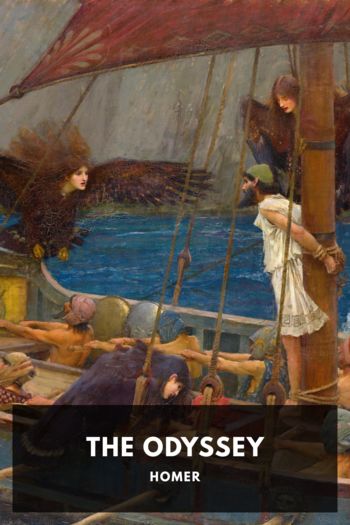The Saboteurs Clive Cussler (ebook reader with built in dictionary .txt) 📖

- Author: Clive Cussler
Book online «The Saboteurs Clive Cussler (ebook reader with built in dictionary .txt) 📖». Author Clive Cussler
“Where?” Goethals asked.
“I don’t know, but we need to find out before they attack again.”
13
Goethals remained at Pedro Miguel for another hour, then had to return to Ancon on his private train, nicknamed the Yellow Peril because of the carriage’s yellow roof and because he used it for surprise inspections up and down the canal. Court Talbot returned with him, while Bell remained at Pedro Miguel to personally oversee the search for the missing explosives. Sam Westbrook, with nothing more exciting planned for his day off than to hang out at the YMCA, offered to help.
Once workers understood what was at stake with the search, there was no loss of volunteers. Bell gave the hundred or so Americans and Caribbean islanders strict instructions not to touch the crates if they found them and to come find him immediately. Men combed every square inch of the sprawling construction site, inspecting all the trucks and trains, searching every foot of tunnel under the two massive lock chambers, and rooting through every warehouse, shed, lean-to, and tent. They sifted through mountains of coal waiting to be used in the locomotives, and a pair of equipment operators checked the crates in the unlikely chance they were hidden high atop the surviving gantry cranes that were the men’s kingdom. Bell detailed other men to search a fifty-foot swath of jungle near the explosives bunker in case the missing dynamite had been hidden there.
As Bell had suspected, they found nothing. He did get a consensus from having conversations with men knowledgeable on the subject and who’d witnessed the blast that it had been produced by about a thousand pounds of explosives, and possibly more, but certainly not less. Again, this fit with Bell’s own hunch that the perpetrators made off with additional crates of dynamite after loading the truck.
The sun was about a half hour from setting, and the shadows were growing long and hard-edged. Sam Westbrook found Bell standing at the base of the ruined crane. He was tracing the curve of bent and torn steel struts as if the ruined metal could give him some clue. Sam handed over a cooled bottle of beer.
Bell thanked him, and his brows shot up when he realized the bottle was chilled. He didn’t realize how thirsty he was until the mild beer hit his lips. The bottle remained upright until the last of it was drained, Bell letting out a satisfied sigh.
“You might have just saved my life.”
“If you want to see the Culebra Cut, work crews are getting ready to head in to fix whatever got broken today and replace bits on the big rock drills and the like. This means it’s a little quieter, and there’s no restrictions on movement because the blasting is suspended for a while. It’s a great time to see the cut for yourself.”
“Anything to distract me from this mess. Let’s go.”
Westbrook took one of the trucks from the motor pool, and they drove northeast on the road that paralleled the double tracks of the Panama Canal Railway. At another station and company town like the one at the Pedro Miguel Locks, Westbrook parked, and they walked to the edge of a narrow valley that stretched for miles in either direction.
On each side of the valley, the land had been contoured into steps like those in the photographs of Asian rice paddies Bell had seen, but these tiers were enormous. On many, two sets of train tracks had been laid. The upper steps were devoid of any activity, while toward the valley floor, as they watched, a train loaded with ore pulled away while another slid into its place. Each train included twenty-one open-sided flatbed cars hauled by a single locomotive.
Westbrook said, “When the trains reach their destination, a three-ton plow blade is placed at the back of the last car. It’s attached to a winch between the first car and the locomotive. Power from the locomotive drives the winch and drags the plow over all the cars, scraping the dirt off to one side. That way, we can unload an entire train in about ten minutes.”
What fed the rock and earth onto the flatbed cars were machines that looked like they’d sprung from the era of iron dinosaurs. These were the ninety-five-ton Bucyrus steam shovels. They were longer than the locomotives and belched black smoke from a single stack in the middle of their broad backs. Men fed coal into the boiler at the rear of the machine, which provided the motivating power, while at the front was a forty-foot riveted boom that supported a mechanical dipping arm capped by a shovel bucket that looked to be the size of a bedroom.
Bell watched, rapt, as the operator swung the boom to the side and dropped the dipper so that the bucket faced the mountain of dirt ahead of the machine. The dipper then slid forward and upward, the bucket tearing a great gash in the ground. Even as the operator raised the bucket up, he was swinging the boom to the other side so that the bucket was in position to dump its contents onto a train without wasting a single second. With the throw of a lever in the cab, the bottom of the bucket fell open and the mass of rock and dirt tumbled onto the flatbed. And then the boom was in motion again to let the bucket rip out another eight-ton chunk of the Culebra Cut.
“And how long have you been widening this valley?”
Westbrook shook his head as if disappointed. “That’s a common question from first-time visitors. And when I tell them the answer, they’re even more impressed.”
“Okaaay,” Bell said, drawing out the word a bit.
“There was no valley, Mr. Bell. We dug





Comments (0)